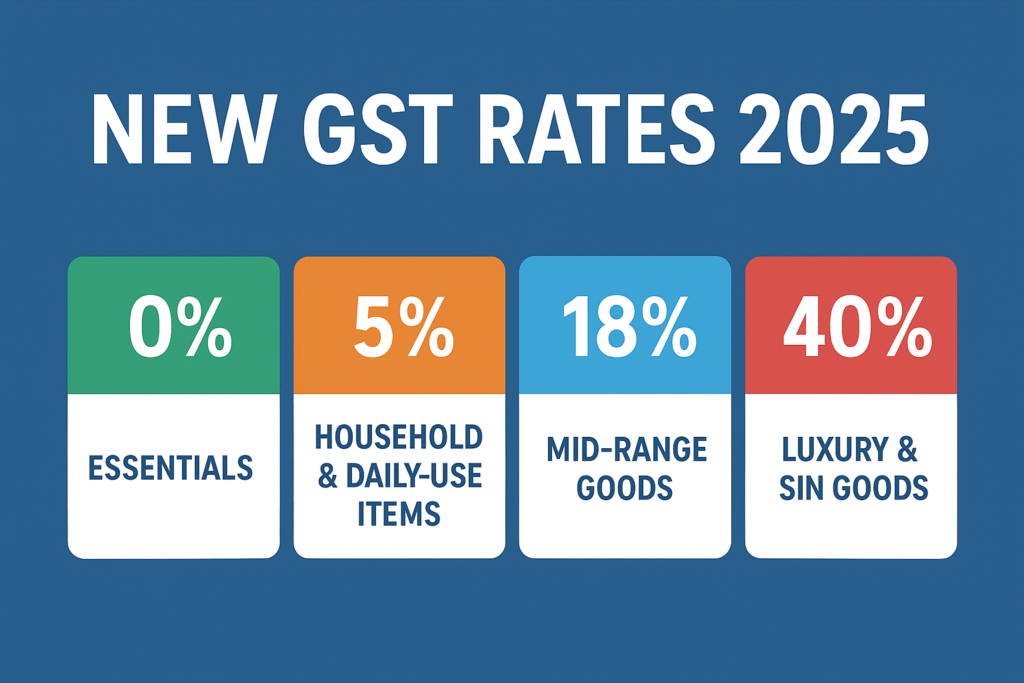
The Goods and Services Tax (GST) Council has introduced a major revamp in India’s GST system, simplifying the structure and reducing multiple slabs into just a few. Effective from September 22, 2025, the new GST framework aims to boost consumption, ease compliance, and reduce prices for middle-class households, while keeping luxury and sin goods under heavy taxation.
GST Rates by Category
- 0% (Nil Rate) – Essentials
- Life-saving medicines (cancer, rare disease drugs)
- Individual life & health insurance
- UHT milk, paneer, parathas, chapatis
- School stationery (pencils, erasers, notebooks)

5% – Household & Daily-Use Items
- Packaged food (butter, cheese, fruit juices, pasta)
- Toiletries (soap, shampoo, toothpaste, hair oil)
- Kitchenware & tableware
- Bicycles and parts
- Medical devices & spectacles
- Agricultural equipment (tractors, drip irrigation machines, fertilizers)
18% – Mid-Range Goods
- Electronics (TVs, ACs, dishwashers)
- Small cars (petrol up to 1,200 cc, diesel up to 1,500 cc, under 4 m length)
- Two-wheelers under 350 cc
- Auto parts, cement, and household appliances
DIGI MERCH STORE PRINT ON DEMAND

40% – Luxury & Sin Goods
- Luxury and mid-size cars (over 1,500 cc or longer than 4 m)
- Tobacco and cigarettes
- Carbonated and aerated drinks
- Casino and lottery services
Why This Change Matters
Easier Compliance – With fewer slabs, businesses face less confusion in billing and filing returns.
Consumer-Friendly – Middle-class families benefit as essentials and packaged goods become cheaper.
Boost to Demand – Lower GST on small cars, two-wheelers, and home appliances will likely push festive sales.
Targeted Taxation – Harmful and luxury goods continue to attract high rates, ensuring revenue balance.
GSTratechangesIndia Partyinvitations
GSTCouncilmeeting DigitalMarketing
GSTondailyessentials PinterestpinsFlyers
Comment















